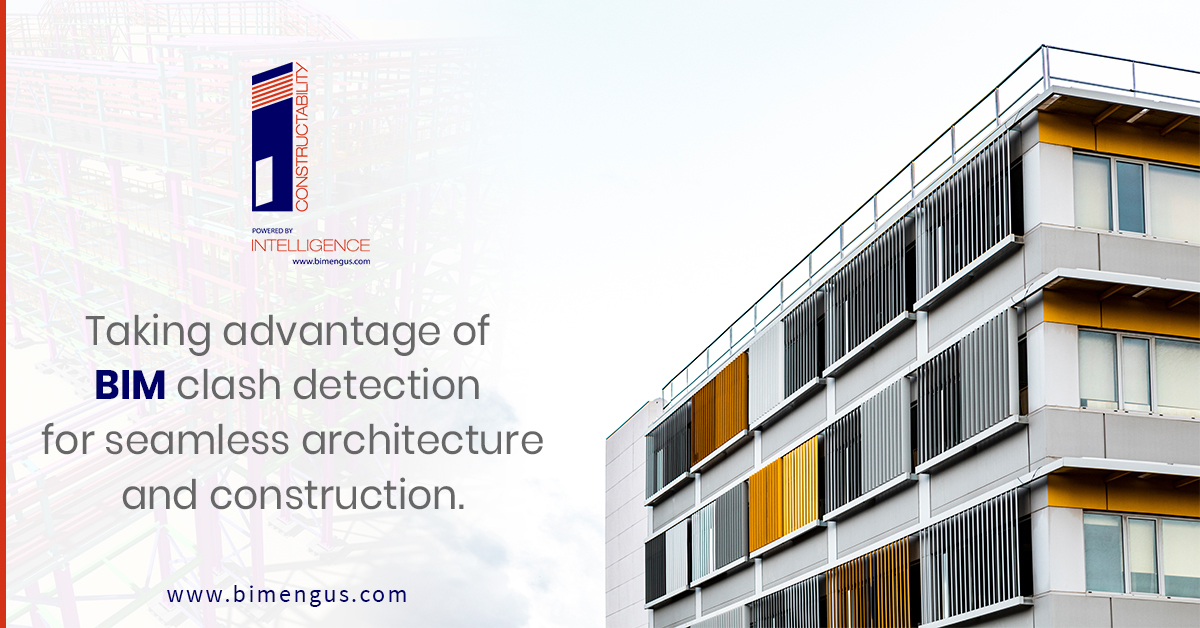Architecture and construction are crucial, yet complex and fast-paced industries that require projects to be completed within budget and time. To meet accuracy, speed, performance, and efficiency, AEC individuals and firms require advanced planning, design, construction, and FM processes and tools. BIM is that solution that offers a myriad of tools to accomplish winning design and construction projects.
For over a decade, BIM has helped transform global construction. The integration of technology brings in a significant amount of value to avoid costly rework, reduce project costs, and mitigate time overruns. Clash detection has been a cornerstone for BIM professionals to achieve greater levels of precision, performance, and productivity. BIM models created by various trades viz. Architecture, Structure, and MEPF are coordinated into a single model based on inputs like 2D drawings, sketches, PDFs, etc.
Once all the primary and secondary components are placed and integrated into the coordinated 3D model, clash tests can be run in Navisworks to check for system or object interferences. Once all the clashes are detected, they are resolved by taking the coordinated model into Revit to make the following changes. Like any other tool, using the clash detective is only effective if used effectively. With that in mind, here’s how AEC individuals, teams, and firms can leverage clash detection to garner maximum benefits.
Defining Clash Detection
Clash Detection is a tool that identifies and resolves potential coordination conflicts within a BIM model. While 3D models are true-to-life, detection clashes manually can be time-consuming, cumbersome, and inaccurate. Automated clash detection helps Architects, Engineers, and Contractors look for interferences in the preconstruction stage and fix them before onsite construction begins. Clashes can also be identified in a Revit Add-In called Clash Pinpoint. Once these clashes are identified, automated generated reports can be sent to various teams for conflict resolution. Clashes can cause substantial and costly rework and material waste leading to hundreds of hours in project delays.
Types of Clashes
Clashes fall under 3 categories viz. Hard, Soft, and Workflow clashes (4D).
Two objects or components occupying the same space, like pipes running through beams, HVAC Ducts intersecting beams, Ducts conflicting with pipes, Pipes intersecting walls, etc. are classified as Hard Clashes.
Soft clashes arise when objects do fit in the space but do not have accurate dimensional or geometric tolerances or clearances. MEP units like air conditioning units, heaters, electrical panels, sprinklers, require buffer space for hassle-free and optimal maintenance. Implementing adequate parameter data to model-checking software like Navisworks helps identify soft clashes based on industry standards and regulations. Workflow clashes have got nothing to do with design errors, but scheduling conflicts of materials and equipment, logistical errors, timeline conflicts, etc. Schedules going wrong or getting interrupted can cause a cascading effect on various processes.
Top reasons and outcomes of clashes
- Silo design approach
- Model building and clash-detection during ongoing construction
- Design errors due to skills inadequacies
- Inconsistent design leading to inaccurate fabrication
- Design and building complexity of various systems
- Inaccurate or low LOD modeling
- File-format incompatibility between various trades
Choosing the right clash-detection solution
There’s no one fit all solution for clash detection, to get the most of your clash detection benefits, you’ll need to consider a system or software suite that best fits your requirements. Interoperability is one of the most important factors to consider. If you’ve already adopted BIM processes and tools, you could consider clash detection software from iFieldSmart or iFBIM. IFieldSmart or iFBIM shows high compatibility and works with your core BIM program.
Features are the second parameter you need to consider whilst considering clash detection software. Every project software needs a powerful clash-detection tool to identify hard and soft clashes through advanced automation, report generation, viewpoints, assign clashes, etc. Adjustments can be made sooner with automated clash detection and notifications being sent to various teams. Clash detection tools require a collaborative strategy. Various experts or stakeholders need to stay on the same page and access the clash detection tool to leverage its full potential. Long-term project improvements are a part of clash-detection, it helps facilities managers or building owners renovate quicker and better.
Making projects cost-effective and safer with clash detection.
BIM is one of the most powerful tools for architects, engineers, and contractors. Reinforcing BIM processes with technology-driven clash detection helps save on expensive rework and project delays. BIM coordination and clash detection isn’t just a process but is a transformational tool that connects design to onsite activities in a unified environment. Construction management software from iFieldSmart and clash detection services from BIMe help connects the gap between back-office operations and onsite activities to reflect precision construction.
Contact Us: – 703-994-4242
Visit us: – https://www.bimengus.com
